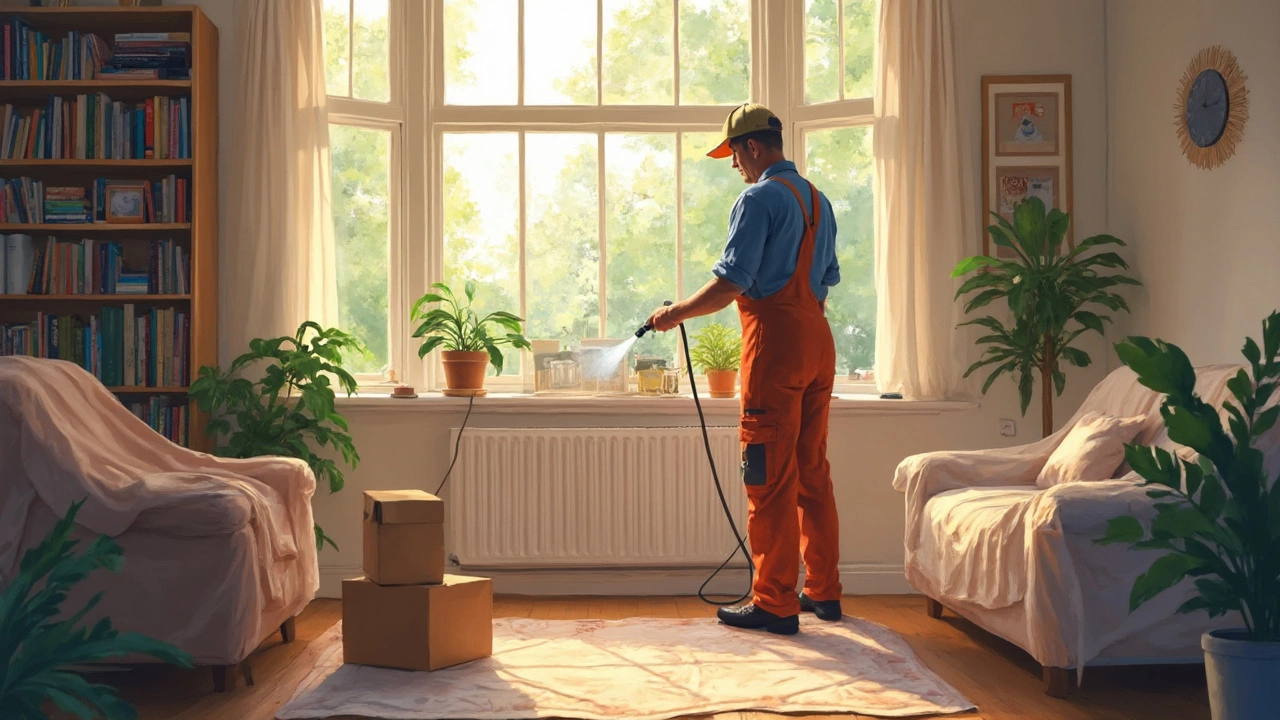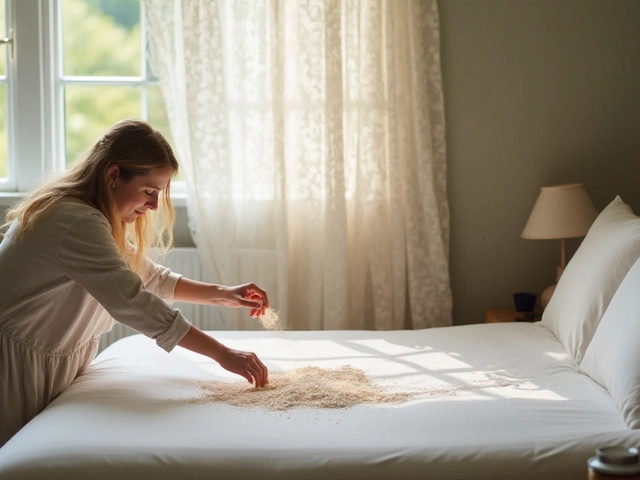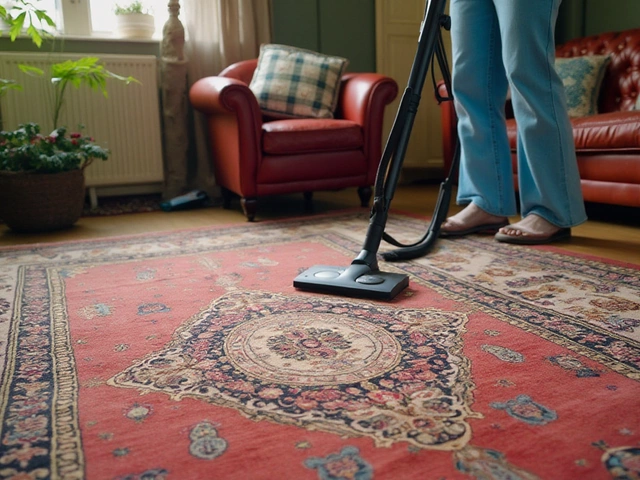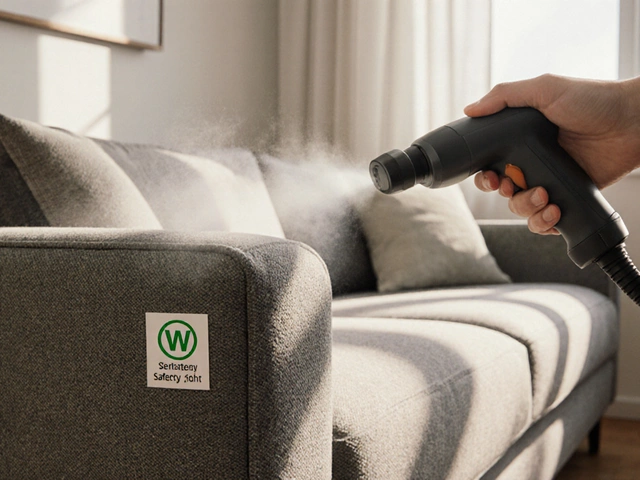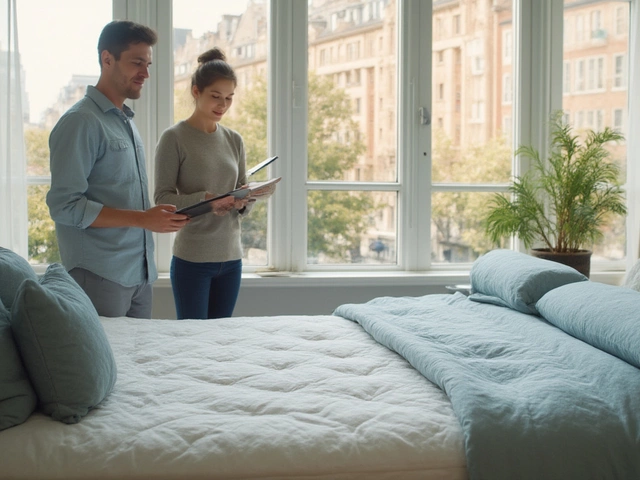Think pressure washing only messes with the outside? Not so fast. High-powered water jets might send a little splash or a ton of moisture inside if you’re not careful. Ever seen water creep under a window or leak behind an old doorframe? It happens—especially with older homes or cracked caulking.
Before you fire up that washer, take a walk through the inside of your house. Look around the window sills, baseboards, and anywhere a door meets the outdoors. Got electronics, art, or precious stuff anywhere near an outer wall? Move it at least a couple feet away—water finds sneaky ways in, and you don’t want soggy wires or streaks on your favorite paintings.
Grab a towel and stuff it along the base of any exterior door you’re worried about, especially basement doors. Cover window sills and vents too, just in case. Fish tanks, pet cages, and houseplants? Move those away from exterior walls or to the center of the room. If you spot old caulk or gaps along your window frames, toss a little painter’s tape over the cracks as a quick fix for the day.
- Why Bother Prepping Indoors?
- Move or Cover These Things First
- Seal Before You Spray
- Quick Tips for Inside Safety
- What to Double-Check After Pressure Washing
Why Bother Prepping Indoors?
It’s easy to assume pressure washing only affects the outside of your home, but that’s simply not true—especially if your house is older or has any minor cracks around doors and windows. Water under high pressure can sneak through the smallest gaps you didn’t even know existed. A lot of homeowners discover this the hard way when they find wet carpets or water marks on their windowsills after a good wash.
Think about this: even a quick spray around bad caulking or worn-out seals can send water inside. The average pressure washer pushes out water at 1,500 to 3,000 PSI (pounds per square inch). That’s enough force to blast through tiny cracks you’d normally ignore, and it can really make a mess right where you don’t want it—in your living room or near your electronics.
Some folks have learned the hard way: a survey from a major home improvement site in 2023 found that about 1 in 5 people who skipped prepping indoors during pressure washing had to deal with some kind of water damage or soggy cleanup afterward. That’s a hassle nobody wants, especially since a little planning can prevent most of these problems.
| Risk Factor | Potential Damage |
|---|---|
| Loose window seals | Wet sills, soggy curtains, stained drywall |
| Old doors with cracks | Water on entry rugs, damaged floorboards |
| Poor ventilation covers | Damp air vents, moist insulation |
Bottom line: prepping the inside means you won’t suddenly find your favorite book turned into a sponge or your gaming console sitting in a puddle. Spend a few extra minutes now, save yourself hours of cleaning and a possible repair bill later.
Move or Cover These Things First
Before you even think about picking up a pressure washer, it's smart to get anything vulnerable off the battlefield. High-pressure spray can push water where you don’t want it, and one bad leak could mean ruined stuff or a big cleanup. So what should you move or cover as a rule?
- Electronics—TVs, game consoles, computers, and charging stations shouldn’t be near exterior walls, especially below windows or vents. Even a little moisture can fry circuits or lead to risky situations.
- Artwork and framed photos—Humidity and leaks play havoc with canvases, prints, and frames. Relocate them a few feet away or to a different room if possible.
- Books, magazines, and important papers—Even a fine mist can warp pages or smudge ink. Stack these items in the middle of the room or cover them with a waterproof tarp.
- Furniture—Couches and chairs can soak up moisture fast. Just sliding them a foot or two from exterior walls makes a difference.
Don’t forget everyday stuff—shoes, bags, baskets—anything sitting by a door or window. Water can sneak under doors if the weather stripping isn’t perfect, so toss towels at the bottom just to be safe.
- Pet cages or beds—Move them into another room or place away from exterior walls. Animals are super sensitive to chilly drafts and unexpected puddles.
- Houseplants—If you love your ferns and succulents, shift them away from spots where condensation can build up on windowsills and soak the soil too much.
If you want to play it extra safe, use a basic plastic drop cloth, bed sheet, or some old towels to cover stuff you can’t move. The main goal is simple: limit what could get wet if water somehow seeps inside during the pressure washing process.
| Item | Move Away? | Cover Needed? |
|---|---|---|
| Electronics | Yes | Optional (extra caution) |
| Artwork & Photos | Yes | Optional |
| Books & Papers | Yes | Highly recommended |
| Furniture | Yes (if possible) | Optional |
| Pet Cages/Beds | Yes | No |
| Houseplants | Yes | No |
Spend 10 minutes on this, and you’ll save yourself the headache of drying out soggy stuff or replacing damaged belongings when your pressure washing wraps up.
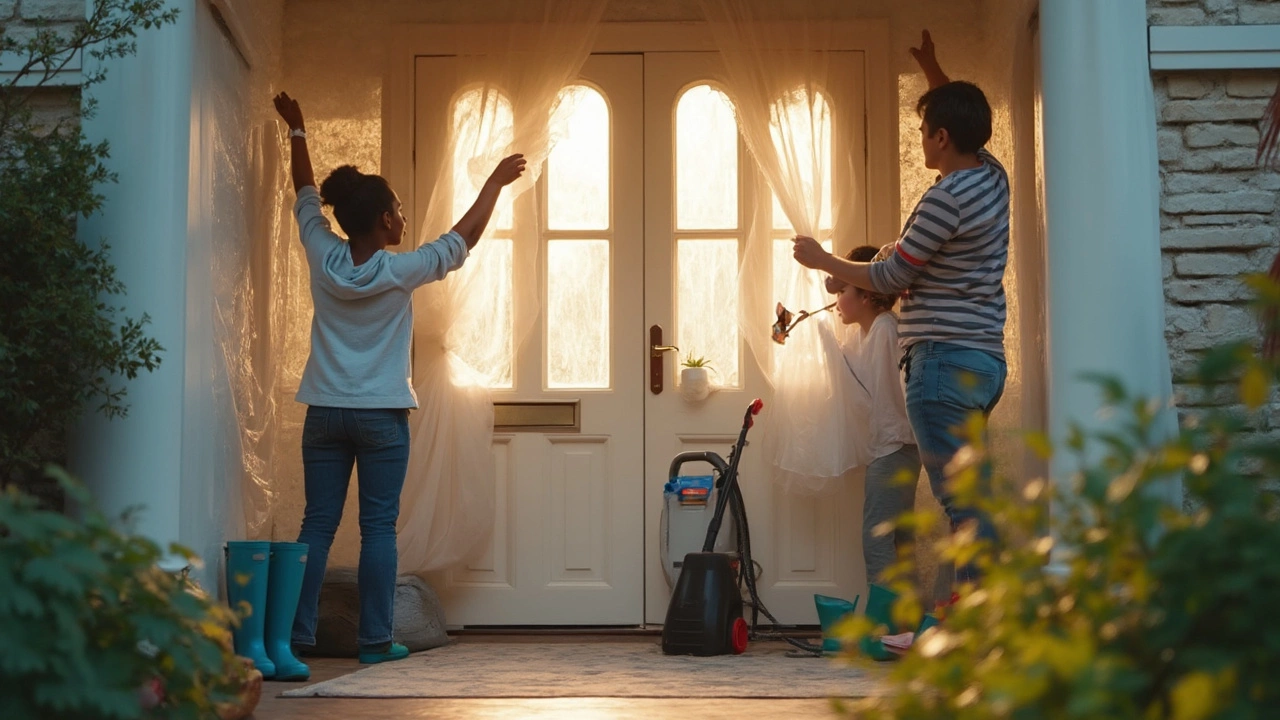
Seal Before You Spray
This part is where a few minutes of work can save you hours of cleanup. If you skip sealing up leaks or cracks before pressure washing, you might end up with surprise puddles or—yikes—damage behind your walls.
Start by checking all window and door frames. If you spot gaps, old caulk that’s shriveled, or missing weatherstripping, plug them up before that first blast of water. Temporary fixes like painter’s tape or even plastic wrap work in a pinch, but fresh caulking is your best friend if you’ve got time.
- Seal any visible cracks around windows, doors, and utility lines (like where your cable or AC lines enter the house).
- Check vent edges (dryer or bathroom vents are common problem zones).
- If you have older wooden window frames, these are notorious for leaking. Give them an extra-thorough look.
For basement windows, wedge an old towel or foam into any gap you aren’t sure about. Remember, a pressure washer can force water a lot deeper than regular rainfall. Even a small flaw will show itself once those jets hit the siding.
If you want a quick look at where the risks usually are, check this table:
| Risk Area | How to Seal | Quick Fix |
|---|---|---|
| Window edges | Silicone caulk | Painters tape |
| Door frames | Weatherstripping | Towel at bottom |
| Vents | Caulk or foam spray | Duct tape cover |
| Utility line holes | Expandable foam | Plastic wrap + tape |
Treat it like prepping your house for a rainstorm… on steroids. Sealing before you spray means less stress, less cleanup, and—most importantly—a dry, damage-free home after that deep clean.
Quick Tips for Inside Safety
Pressure washing has a way of sending water where it’s not supposed to go. Let’s keep the mess outside and your stuff safe. Before starting, focus on these pressure washing safety tips for the inside of your home.
- Unplug Electronics: Anything plugged in near an outside wall? Pull those cords and stash devices away from windows, doors, and floor vents. Water and electricity never mix well.
- Move Valuables: Slide furniture, art, and electronics a few feet away from exterior walls. If you have shelves along an outside wall, remove decorations or picture frames.
- Cover Essentials: Use plastic sheeting or even just trash bags to shield anything you can’t move (think big couches or entertainment centers).
- Check Floors: Roll up carpets or rugs near exterior doors and windows. Even a little leak could mean hours of drying time—or worse, mold.
- Stuff Gaps: Towels work wonders along door sills, and painter’s tape covers up small cracks around windows. It’s cheap and takes just minutes to do.
- Pet Precautions: If you have cats, dogs, or even fish tanks near the action, move them deep inside or close them off in a room far from the pressure washing zone.
Some pressure washers blast out water at up to 3,000 PSI. That’s strong enough to push water under loose window seals or through old doorframes. Here’s a quick look at why prep matters:
| Common Entry Point | Risk During Pressure Washing |
|---|---|
| Cracked Window Caulk | Leaks, soggy drywall |
| Old Door Frames | Wet floors, warped wood |
| Uncovered Vents | Moisture in HVAC, musty smells |
Double-check room corners and behind heavy furniture when you’re done. Catching a leak early saves a huge headache—and keeps your home dry and safe after a pressure washing job.
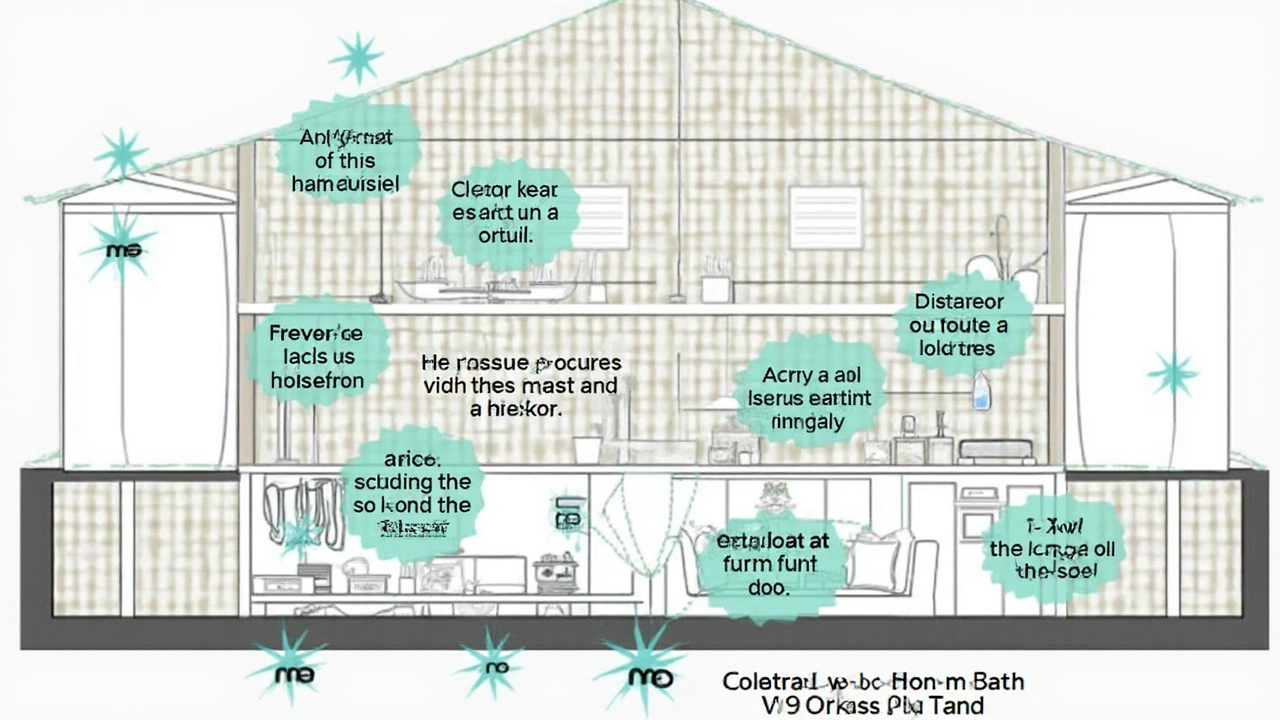
What to Double-Check After Pressure Washing
Once the pressure washing is done, your job isn't quite finished. There are a few things you should double-check inside to catch any problems early—before they become expensive fixes.
First, walk along every wall that faces the outside. Look closely at window sills, baseboards, and around doors. Feel for wet spots, damp patches, or signs of water pooling. This is where leaks pop up most often. If you notice any moisture, dry it up right away and keep an eye on it over the next couple of days.
Cracks around windows and doors are big trouble spots. If you spot any wet wood, peeling paint, or soft drywall, jot it down. That's a sign water snuck in—even if it's just a little. If you used towels or tape, swap them out if they're wet, and toss anything that feels soggy in the wash.
Your electronics and valuables need another look, too. Make sure nothing splashed over them. Double-check sockets by running your hand close (not touching) to see if there's any dampness. If you smell a musty odor, air out the space right away and use a fan to help dry it faster.
- Check under furniture near exterior walls for hidden puddles.
- Lift area rugs if they’re close to doors or windows to see if the floor underneath is dry.
- Open each window and door briefly, making sure nothing’s stuck or swollen from moisture.
- If you have a basement, shine a flashlight near the walls for any sneaky leaks—pressure washing can send water downhill fast.
If you do spot water where it shouldn’t be, don’t just hope it dries later. Mold can start in as little as 24 hours. The U.S. Environmental Protection Agency says,
"Promptly fixing water leaks and thoroughly drying wet areas is the most effective way to prevent mold growth in homes."
For folks who want to see how common leaks are, here’s a quick rundown from home inspector surveys:
| Area Checked | Reported Leaks (%) |
|---|---|
| Window Sills | 38% |
| Door Frames | 22% |
| Basement Walls | 15% |
| Ceiling Near Eaves | 9% |
Pressure washing is great for curb appeal, but it’s easy to forget how water can travel. Double-checking these spots helps you catch leaks before they turn into something way more annoying. Protect your home—and your stuff—so you don’t have to deal with headaches later.
